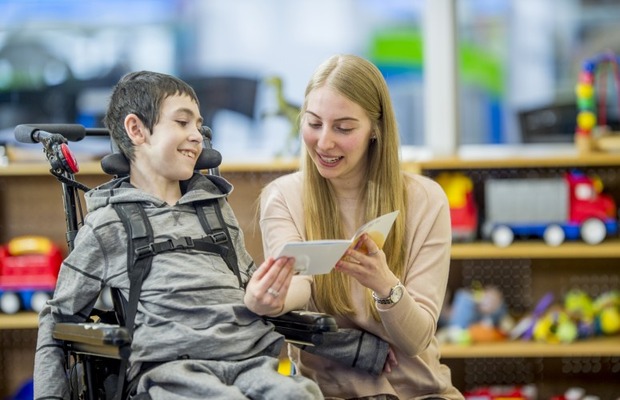
Children’s Community Nursing team: Sleep study information

What is a sleep study?
A sleep study is a test to see what happens to your child’s breathing pattern when they are asleep and to help identify any sleep related disorders. For example, your child’s breathing can become laboured, they can snore or make funny movements, these things can lead to disturbed sleep at night which may make your child tired the next day.
Your child may have been referred for a number reasons which should have discussed with you at the time of the referral. These may include:
- suspected sleep apnoea or sleep related disorder.
- checking oxygen levels in children who are prescribed/ recently required continuous oxygen.
- history of breathing difficulties.
- pre and post surgery.
- underlying health condition.
What is involved?
The sleep study is carried out at home. This helps keep the child in their normal sleep routine and avoids you taking time off work or taking the child out of school.
You will be invited to Hunslet Health Centre where you will be given a monitor to measure your child’s oxygen levels while they are asleep. The monitor is called an oximeter which is a small machine that has a lead and probe attached to it. The probe is attached with a blue foam wrap. It has an infrared light which shines through body tissue it is usually attached to the big toe or around the foot. The light measures the amount of oxygen in the bloodstream. The infrared light probe is attached to the monitor while your child sleeps and continually records the oxygen readings throughout the night.
The probe will need to stay attached to your child’s toe or foot overnight. The monitor has a memory and records your child’s oxygen level and heart rate whilst they are asleep. The probe needs to stay on to record 6 to 8 hours of data per night to enable any kind of assessment to be made.
You will also receive information in this leaflet and a video that will show you how to use the monitor and how to correctly place and secure the sensor probe to the child’s toe. You will need to read all the information in this leaflet and to watch the video provided this will enable you to get a good trace.
What to do before setting your monitor up
You will have received a box containing all the equipment to carry out the sleep study. The box will include a monitor, a blue foam wrap on the end of the sensor, and a power cable. The box also contains some tape to keep the probe in place and a diary.
You will need to read the instructions in this leaflet and watch the video clip (below) to carry out the sleep study.
We would advise that the monitor is set up just as your child is about to go to bed but sometimes for younger children it may be easier to attach the probe once they are asleep.
Sleep study video guidance
Sleep study video
Sleep study video
Sleep study video transcript
Sleep study video transcript
1. Your equipment
Hello and welcome. You should be watching this short video if you have been referred by your consultant and paediatrician for an overnight sleep study.
You will have been given a box containing all the equipment needed to carry out the sleep study.
The box will include a monitor (this may not look like the example in the video but is set up the same), a blue foam wrap on the end of the sensor, a power cable and a diary.
The box also contains some contact numbers if you need to contact the team and some tape to keep the wrap and probe in place.
The oximeter will record the amount of oxygen in your child’s blood and your child’s heartrate. (film of oximeters and leads show both rad 97 and 8)
We would advise that the monitor is set up just as your child is about to go to bed but sometimes for younger children it may be easier to attach the probe once they are asleep.
2. Turning on the monitor
Put the black lead into the back of the monitor. Plug the monitor into the mains electricity. Plug in the sensor in the front of the monitor. Now turn on the monitor (Green button).
The monitor will go through an internal test and once it picks up a signal it will display numbers in the two boxes on the front of the monitor.
The top reading on the monitor indicates the oxygen levels and the bottom reading is the pulse.
3. Attaching the sensor
You will need to put the blue foam wrap (soft blue foam wrap attached to the probe) around your child’s big toe or if you have a baby the babies foot.
(show sensor placement for a baby, show sensor placement for older child.)
To place the wrap on a child.
When putting the blue wrap onto the toe make sure the paddle with the red light is on top of the toe and the second paddle with no light is directly underneath in line with the red light. Fasten the Velcro fastening around the toe. It should be wrapped firmly but not tight. Please be aware on occasion it can leave a little burn or leave a mark. Due to this we advise you to change the probe 4 hourly by moving it to a new toe or other foot.
You can use the tape provided in the box to keep the probe wire in place making sure the probe wire runs up the foot. You can also put a sock on the foot.
To place the wrap on a baby
It will need to be placed at the edge of the foot near the little toe. The paddle with the red light needs to be on top of the foot and the white paddle with no light directly on the bottom underside of the foot in line with the red light. Fasten the Velcro fastening around the foot. It should be wrapped firmly but not tight. Please be aware on occasion it can leave a little burn or leave a mark. Due to this we advise you to change the probe 4 hourly by moving it to a new toe or other foot.
You can use the tape provided in the box to keep the probe wire in place making sure the probe wire runs up the foot. You can also put a sock on the foot.
Now the machine is set up place the monitor at the end of the bed. Ensuring all the equipment and wires are at the foot of the bed reduces the risk of strangulation.
Leave the monitor recording remember you need 6 to 8 hours per night of recorded sleep. You need to change position of the sensor after 4 hours to ensure the skin does not mark. If your child wakes up for the toilet at this point it will be a good time to change the sensor probe to another foot or the other big toe.
The machine will not make a noise unless either the probe comes off or if SATs drop below 85. The machine will then alarm.
Please record in your diary any points at which your child wakes, the machine alarms or the sensor probe comes off.
If the probe has come off, you can silence the alarm by pressing the yellow button. Reposition the probe as shown.
Keep the monitor plugged into the mains power supply overnight. When moving the probe after 4 hours do not turn off the machine just silence the alarm. If your child needs to go to the toilet in the night do not turn off the machine unclip the probe unless it is around the time the probe needs to be moved.
Record in the diary why the machine alarms for example the probe came off, levels dropped, went to the toilet or no reason
4. Disconnect the monitor and turn off
Turn off the monitor in the morning by pressing and holding the power button for about 8 seconds. Once this has happened the data will have been saved.
You can now remove the blue wrap from the foot.
You will need to complete the steps above on your second night.
5. Packing up and returning equipment
Before returning our equipment, please ensure the power lead, probe, oximeter and diary are put back into the box that the oximeter was picked up in.
Please return your equipment on the agreed date to Hunslet Health Centre where you picked it up from. This is usually 48 hours after. Please return equipment on time as machines are needed for loan to other families.
What happens after you return your equipment.
The data from the monitor will be downloaded and sent to the consultant or doctor who requested the sleep study along with the diary. Please wait to hear from them as we do not interpret your results. Your results will be shared via letter or at your next appointment.
We will not contact you with results. If we do not have enough data, we will contact you via phone to discuss next steps.
Thank you for watching and good luck with your sleep study.
Please look after our equipment as it is very expensive to replace and is needed for other children referred to us.


